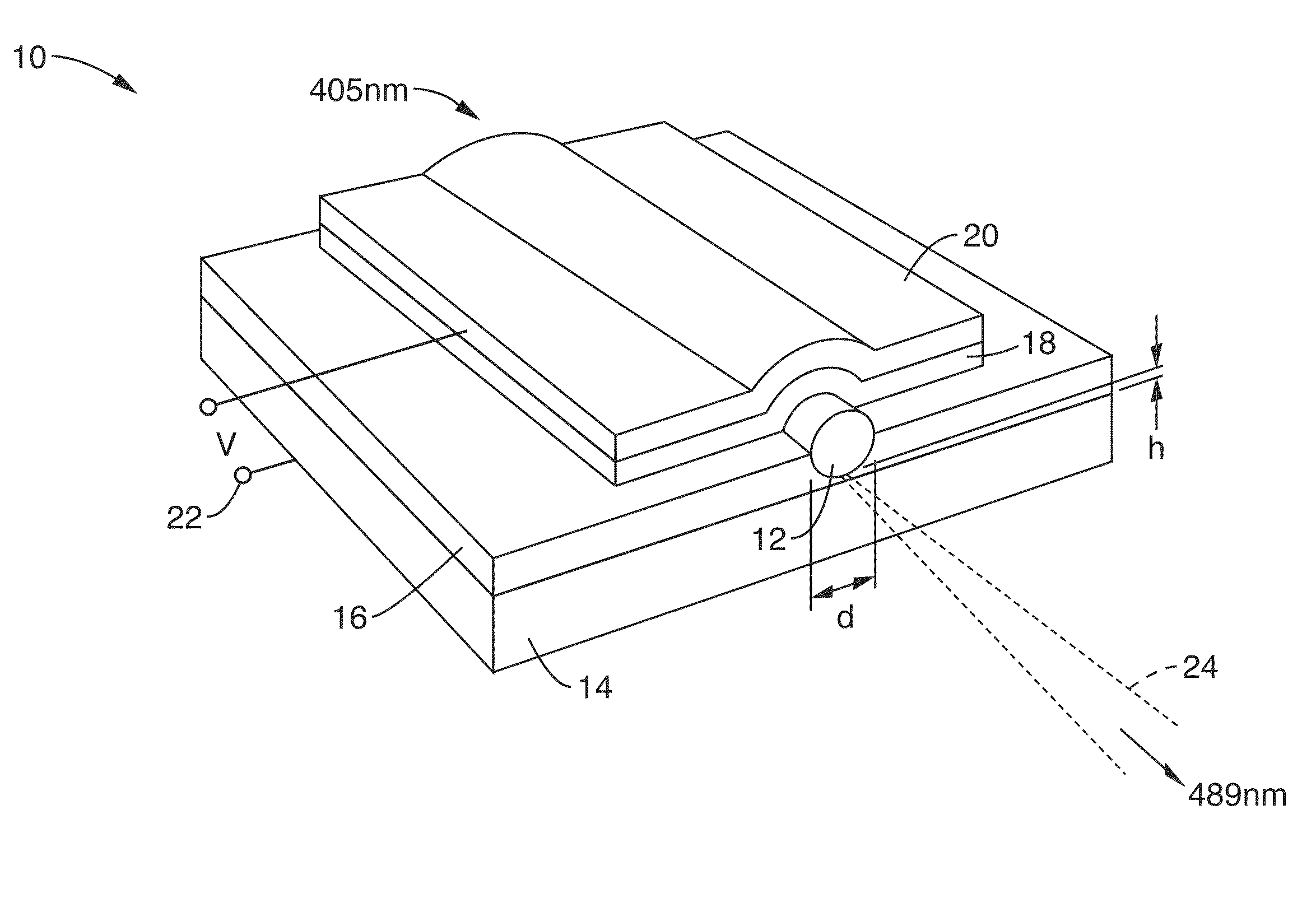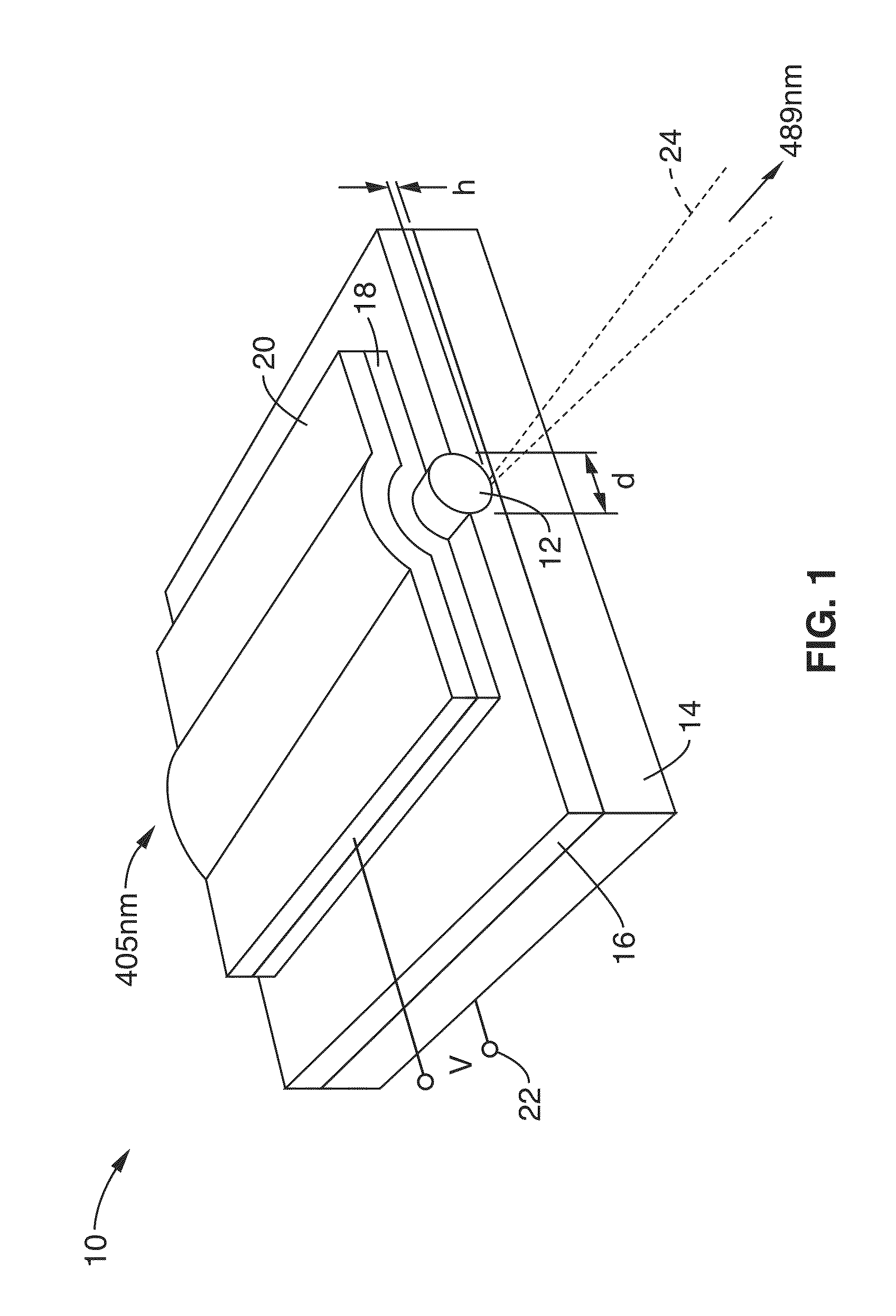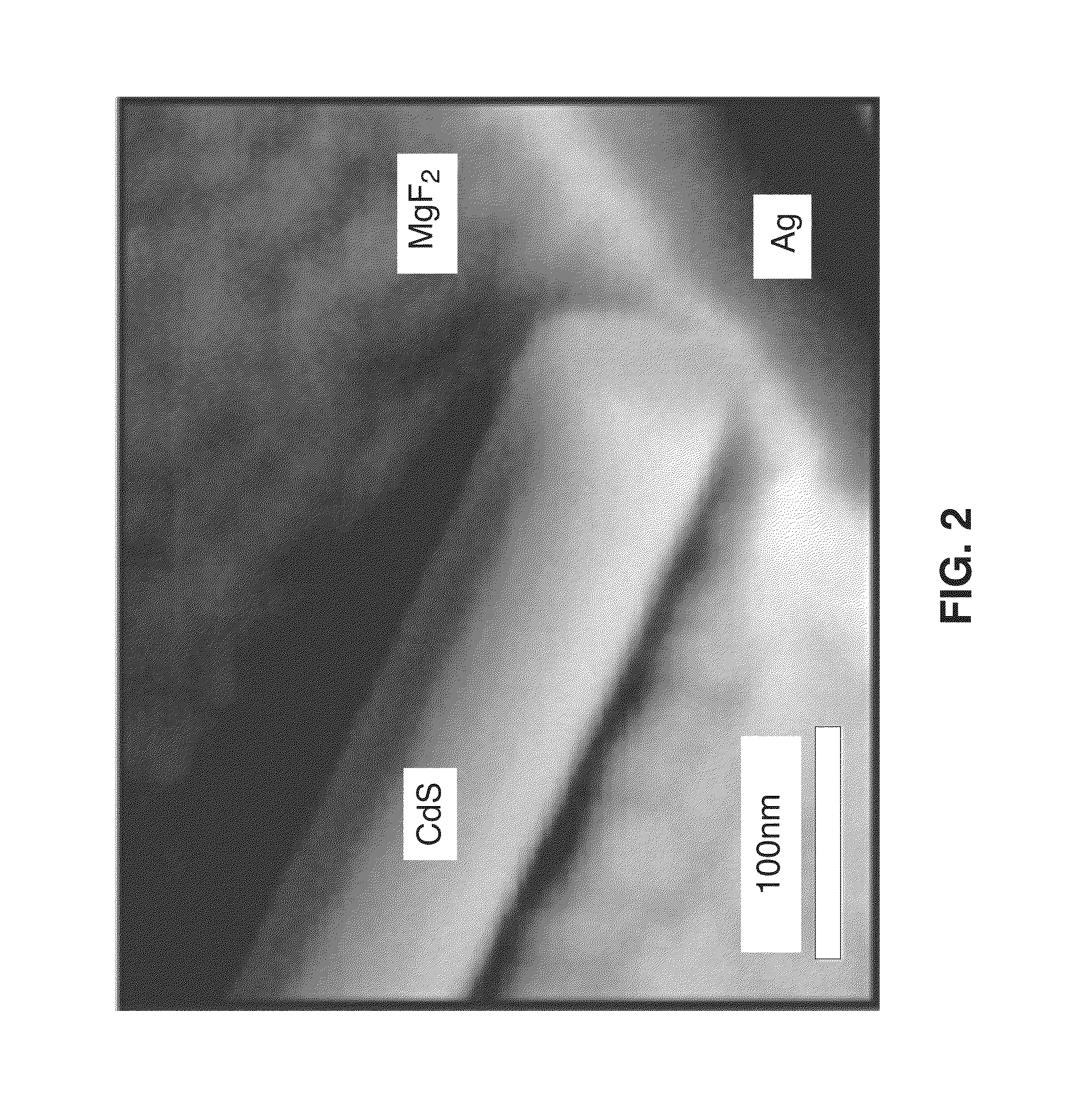Plasmon lasers at deep subwavelength scale
a laser and subwavelength technology, applied in the field of laser light sources, can solve the problems of limited lasers, both in optical mode size and physical device dimension, and achieve the effects of large modulation bandwidth, large modulation bandwidth, and efficient generation of sub-wavelength high intensity ligh
- Summary
- Abstract
- Description
- Claims
- Application Information
AI Technical Summary
Benefits of technology
Problems solved by technology
Method used
Image
Examples
embodiment 1
[0121]2. The laser source of embodiment 1, wherein at least a portion of the electron carrier population travel from the metal substrate through the low-refraction index gap to the semiconductor material.
[0122]3. The laser source of embodiment 1, wherein the laser source supports a plasmonic mode having a mode size smaller than λ / 2 in at least one dimension of the mode.
embodiment 3
[0123]4. The laser source of embodiment 3, wherein the laser source supports a plasmonic mode having a mode size smaller than λ / 20 in at least one dimension of the mode.
[0124]5. The laser source of embodiment 1, wherein the low-refraction index gap comprises a layer of material having a thickness that ranges between approximately 1 nm and approximately 100 nm.
embodiment 5
[0125]6. The laser source of embodiment 5, wherein the low-refraction index gap comprises a layer of material having a thickness that ranges between approximately 2 nm and approximately 50 nm.
PUM
 Login to View More
Login to View More Abstract
Description
Claims
Application Information
 Login to View More
Login to View More - R&D
- Intellectual Property
- Life Sciences
- Materials
- Tech Scout
- Unparalleled Data Quality
- Higher Quality Content
- 60% Fewer Hallucinations
Browse by: Latest US Patents, China's latest patents, Technical Efficacy Thesaurus, Application Domain, Technology Topic, Popular Technical Reports.
© 2025 PatSnap. All rights reserved.Legal|Privacy policy|Modern Slavery Act Transparency Statement|Sitemap|About US| Contact US: help@patsnap.com



